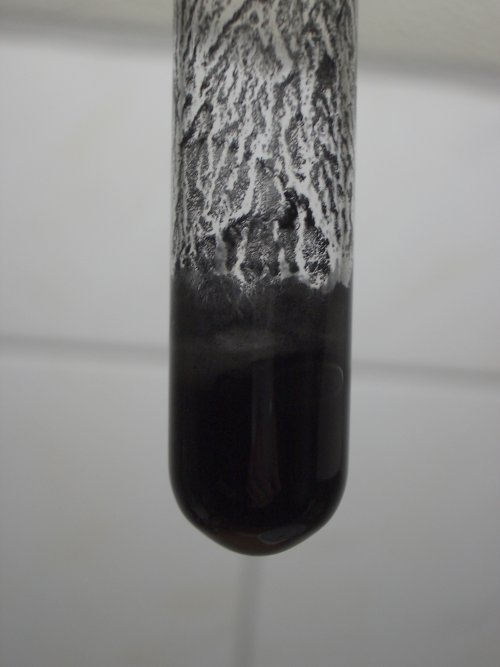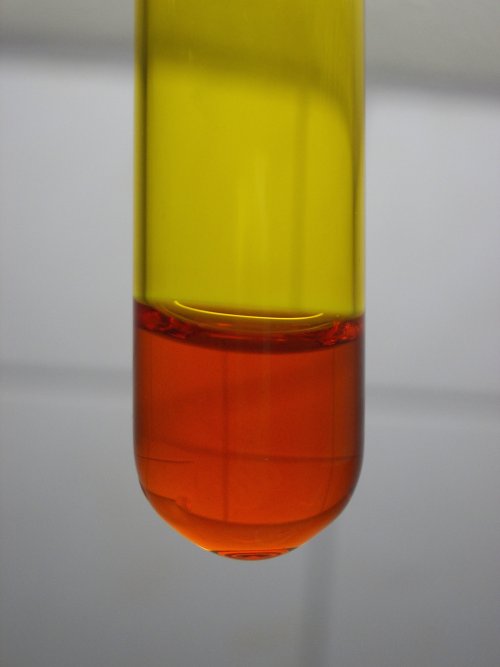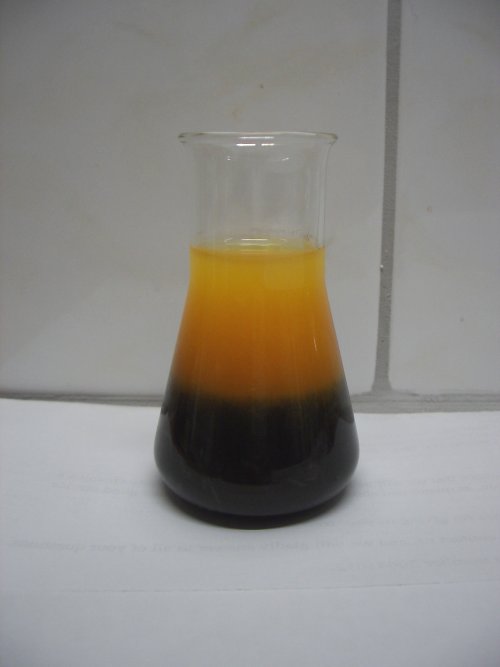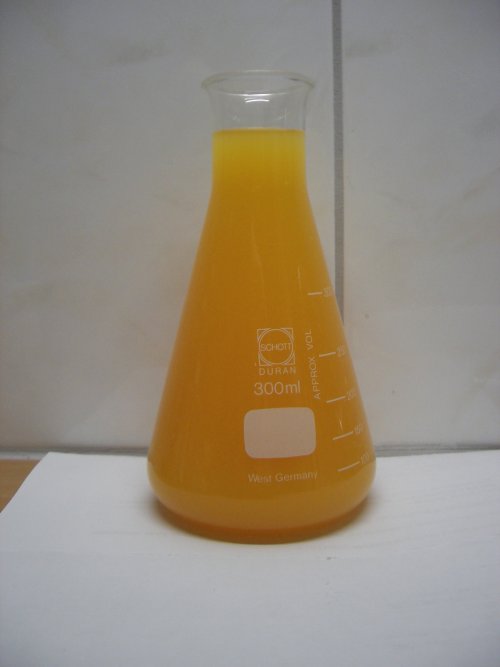


Bismuth iodide and tetra-iodo bismuthate (III)
This experiment shows that iodide gives a black precipitate when it is added to an excess amount of a solution of bismuth (III) nitrate in dilute nitric acid. When more iodide is added, then the black precipitate redissolves and an orange/red solution, containing the tetra-iodo bismuthate (III) ion is obtained.
The two pictures below show the black precipitate with excess bismuth (III) and the red solution with excess iodide.


When the solution with the orange/red iodide-bismuth complex is diluted, then the black precipitate of bismuth iodide is formed again, together with a white precipitate, due to hydrolysis of bismuth (III). Apparently, the orange/red complex is not very stable and requires a moderately high concentration of iodide and/or acid. On further dilution, the black precipitate of bismuth iodide hydrolyses and more of a white precipitate is formed. With this reaction, iodide is released again and this released iodide in turn allows remaining non-hydrolysed bismuth to form the orange iodo-complex. So, in practice, on dilution a complex equilibrium exists between the following species:
- orange BiI4–
- black BiI3
- white Bi(OH)XY
Here, X and Y can be OH–, I– or NO3–. When the black BiI3 hydrolyses, then free I– is formed and this can form more BiI4–.
When the orange/red contents of the test tube is poured in an erlenmeyer with approximately 60 ml of water, then first the liquid becomes orange and turbid. Within a few seconds, the liquid turns black at the bottom half part, where the highest concentration of bismuth and iodide is present.

The contents of the small erlenmeyer is poured in a larger erlenmeyer with 300 ml of water. The total volume of liquid becomes approximately 350 ml. In the large erlenmeyer, a dark turbid grey/yellow liquid is obtained. This dark liquid however turns orange in approximately 10 seconds, but it remains turbid. The black BiI3 hydrolyses to a white basic bismuth salt in an orange liquid. In the picture below, the contents of the large erlenmeyer is shown, approximately 30 seconds after pouring in the contents of the smaller erlenmeyer.
